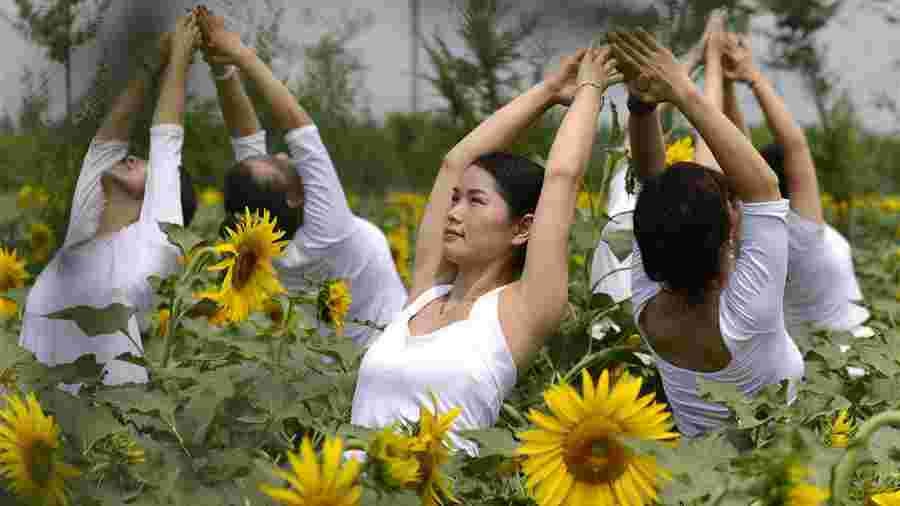China’s growing middle class is not only becoming fixated on products that connote “the good life” – cars and luxury goods among them. It is also becoming obsessed with looking good both inside and out. Rising incomes mean consumers have more disposable money for gym memberships and fitness classes. A large and active millennial population also fueled the trend, and Chinese people, mainly women, are seeking to meet the evolving beauty standards that increasingly favor toned physiques and sculpted bodies.
But aside from the usual spas, free weights and treadmills, the past decade saw the rising demand of yoga from stressed-out middle class urbanites.
From India to China
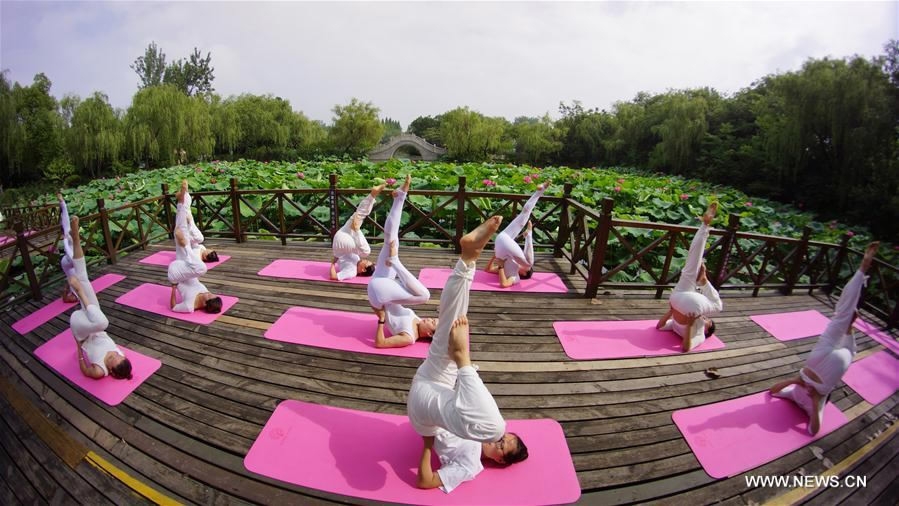
Yoga fans practice yoga during an event marking the International Yoga Day, which falls on June 21 every year, in Yangzhou, east China's Jiangsu Province, June 20, 2017. /Xinhua Photo
Yoga fans practice yoga during an event marking the International Yoga Day, which falls on June 21 every year, in Yangzhou, east China's Jiangsu Province, June 20, 2017. /Xinhua Photo
Yoga, originating from India, came into ancient China during the vast spread of Buddhism. It started to gain popularity in Hong Kong in the 20th century and then extended into the Chinese mainland. However, it is not until the 21st century that yoga gradually rose in prevalence in the mainland, especially in the large urban cities.
In 1985, a daytime television show on state network CCTV starring Zhang Huilan, also known as Wai Lana and called the mother of yoga in China, guided Chinese housewives through gentle yoga postures. The program went off the air in 1999 with yoga still hovering in obscurity in the country.
In 2002, China’s first yoga studio opened in Beijing founded by Mimi Kuo-Deemer and Robyn Wexler, two women from the US state of California. Yoga Yard was a haven of tranquility and was “founded on a love for yoga and the joy the practice can bring,” according to its website. Robyn Wexler, one of the founders, said in previous interviews that the studio epitomized “consistency, stability, and continuation in a city undergoing so much transformation and change, building up and tearing down.”
Initially, most students were expatriates. But that did not last long. The following years saw yoga studios sprouting all over China and more locals starting to enjoy the classes. Estimates suggest that over 10 million Chinese now practice regularly, compared to about 16 million Americans.
First official yoga data in China
Recently, the official Chinese Academy of Social Sciences (CASS), along with a group of scholars affiliated with top think-tanks and universities, co-sponsored the “Yoga Blue Book: China Yoga Industry Development Report,” the first-ever official report into the recent yoga explosion in China. Zhang Yongjian, a senior researcher at the CASS and one of the authors of the report, told Mail Today that they found more than 10,800 main yoga schools across China and millions of practitioners. This does not even count almost every local neighborhood gym that also offers yoga lessons.
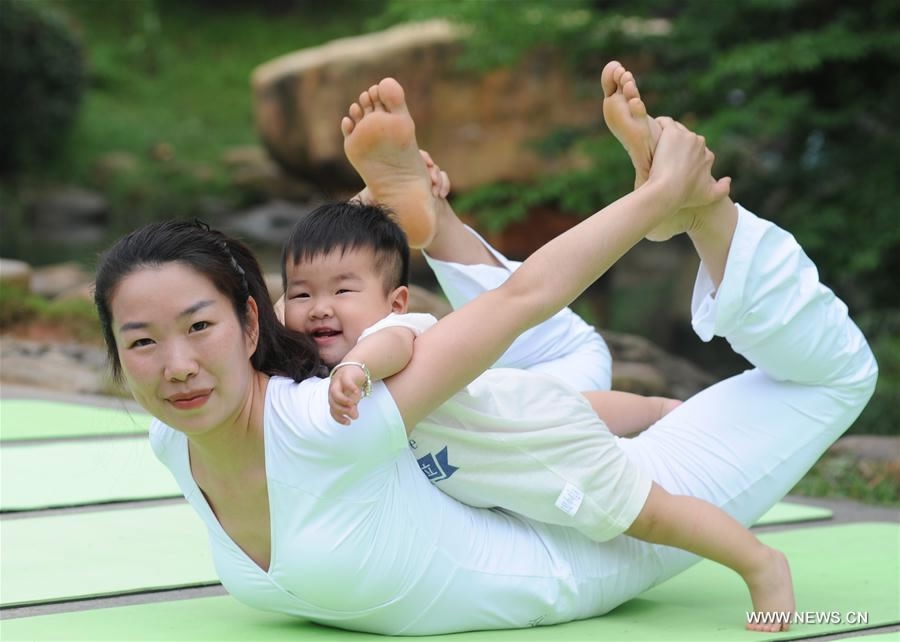
A yoga fan practices yoga with her son during an event marking the International Yoga Day, which falls on June 21 every year, in Chenzhou, central China's Hunan Province, June 20, 2017. / Xinhua Photo
A yoga fan practices yoga with her son during an event marking the International Yoga Day, which falls on June 21 every year, in Chenzhou, central China's Hunan Province, June 20, 2017. / Xinhua Photo
One of the most interesting takeaways from the report is the profile of yoga followers – young, female, affluent and living in big cities in the 25-40 age group.
“We found that the popularity of yoga was highly related with a city’s economic development,” Zhang said, with wealthy Beijing, Shanghai and southern Guangdong Province home to the most number of yoga practitioners. The lowest number was found in poorer provinces and in the western hinterland, in Qinghai, Xinjiang and Tibet.”
There were exceptions, though, because relatively poor northeast provinces like Jilin, Heilongjiang and Liaoning also have many yoga schools. Zhang speculated that this could be related to the widely-held national perception of young women in China’s northeast “being very health and beauty conscious.”
However, the study also revealed that one of the biggest challenges of the yoga boom now is ensuring the quality of training and meeting the huge demand to learn from authentic teachers.
Yoga superpower
In many ways, China is simply catching up with the global wave of popularity that yoga has been enjoying in more developed economies. Western countries have been enjoying the ancient practice of uniting mind, body and spirit through poses, breathing and meditation since the 1960s. But China has surely been making up for that in recent years.
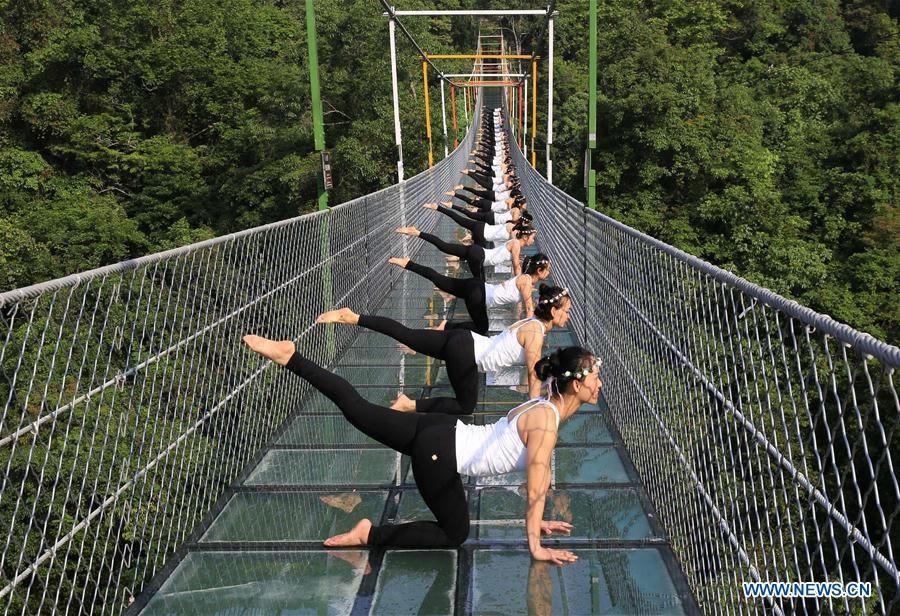
Yoga lovers practice yoga on a glass bridge at Shuanglonggou forest park in Liuzhou, south China's Guangxi Zhuang Autonomous Region, May 14, 2017. /Xinhua Photo
Yoga lovers practice yoga on a glass bridge at Shuanglonggou forest park in Liuzhou, south China's Guangxi Zhuang Autonomous Region, May 14, 2017. /Xinhua Photo
The India-China Yoga College (ICYC), which is under China’s Yunnan Minzu University, has announced that it has opened enrollment for the country’s first master’s program in yoga. Students can now sign up for the three-year program, the first two years of which will be completed in Kunming, capital of southwest China’s Yunnan Province, and the final year in India, Lu Fang, deputy dean on ICYC, told Xinhua news agency. The move is the most recent manifestation of how the ancient Indian practice continues to be embraced by Chinese people.
The scale of the following was probably most displayed in the days leading to the celebration of the International Day of Yoga on June 21. In six cities in eastern China, from Shanghai to Hangzhou and Wenzhou, more than 30,000 people participated in events organized by the consulate in Shanghai. And on June 20, yoga came to the Great Wall of China for the first time where Chinese practitioners gathered against the stunning backdrop to promote yoga, along with 20 yoga ambassadors from India.
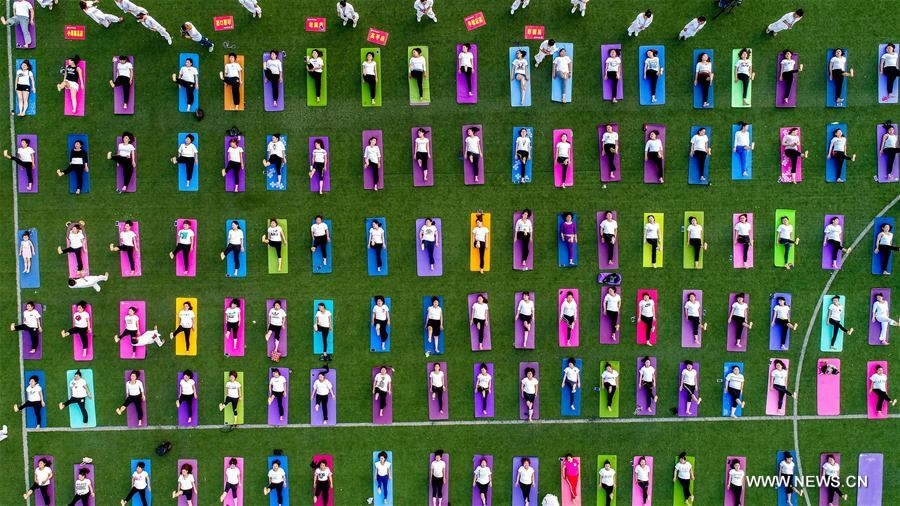
Yoga fans practice yoga during an event marking the International Yoga Day, which falls on June 21 every year, in Huaxian County, central China's Henan Province, June 19, 2017. / Xinhua Photo
Yoga fans practice yoga during an event marking the International Yoga Day, which falls on June 21 every year, in Huaxian County, central China's Henan Province, June 19, 2017. / Xinhua Photo
The late yoga guru, BKS Iyengar, once remarked that the patronage of yoga in China is so wide that in the future, it could have more yoga practitioners than India.
Meanwhile, Chen Si, a journalist working to promote more classical yoga teaching by inviting Indian masters to teach said, “China has a tradition of embracing foreign cultures and making them its own. That’s why it’s been so vibrant.”

